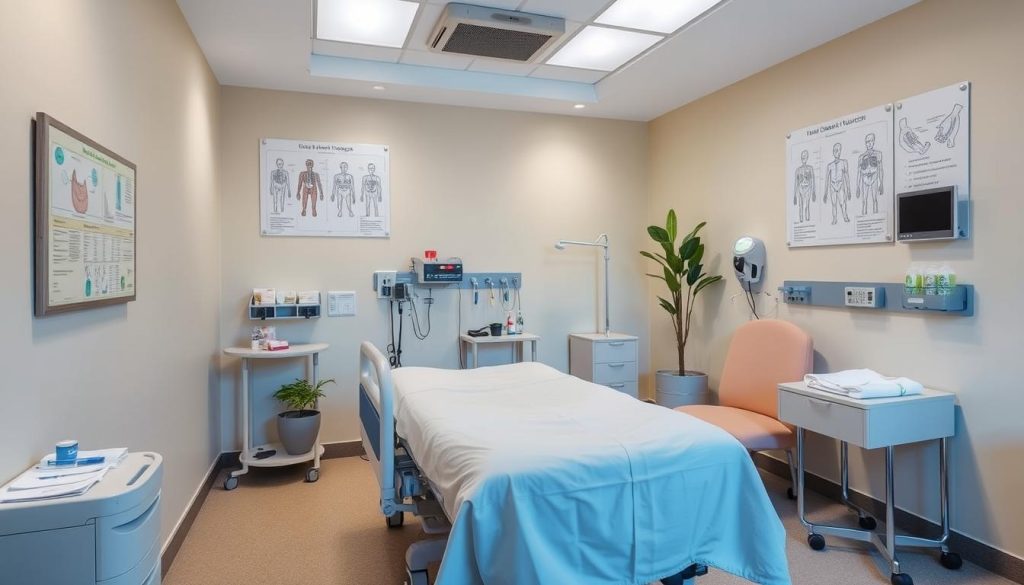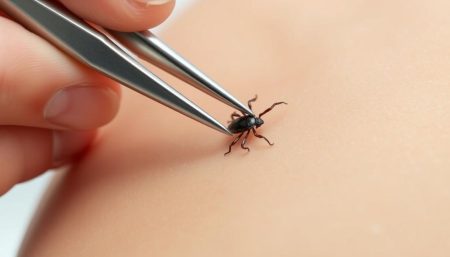Top surgery is a big step for many transgender and non-binary people. It’s a way to change their chest to match their gender. This gender confirmation surgery is a big change that needs careful planning and knowing what to expect after.
If you’re thinking about top surgery, you should know what’s coming. From the first meeting with a doctor to taking care of yourself after surgery, each step is important. Knowing what to expect can make you feel more at ease and help you get through this big change.
This guide will help you understand what top surgery is like. It covers everything from who can get it to what to expect after. By learning about these things, you’ll be ready to move forward and make your body match who you are.
Understanding Top Surgery: A Complete Guide
Top surgery is a key part of gender-affirming care for many transgender people. This guide explains the different chest surgeries, the differences between them, and important terms to understand.
Types of Gender-Affirming Chest Surgeries
There are several chest surgeries for transgender individuals:
- Chest masculinization surgery (FTM)
- Breast augmentation (MTF)
- Breast reduction (MTF)

Differences Between FTM and MTF Procedures
FTM top surgery aims to make the chest look masculine. MTF procedures aim to increase breast size or shape. The methods and recovery times differ between these surgeries.
| Aspect | FTM Top Surgery | MTF Breast Augmentation |
|---|---|---|
| Goal | Flat, masculine chest | Enhanced breast size |
| Technique | Removal of breast tissue | Implant placement |
| Recovery Time | 4-6 weeks | 2-3 weeks |
Medical Terminology and Common Terms
Understanding medical terms is important for patients. Key terms include:
- Bilateral mastectomy: Removal of both breasts
- Nipple grafts: Relocation of nipples during FTM surgery
- Breast implants: Silicone or saline devices for breast enlargement
Knowing these terms helps patients make informed choices about their surgery.
Determining Eligibility for Gender Confirmation Surgery
Gender confirmation surgery is a big step for many. It’s a journey that requires meeting certain criteria. These criteria make sure patients are ready physically and emotionally.
Age is a key factor in eligibility. Most clinics need patients to be at least 18. This ensures they can make informed decisions about their future.
Psychological evaluations are also important. Mental health experts check if patients are ready for surgery. They look for a strong, consistent gender identity. This confirms surgery is right for the patient’s long-term goals.
Medical clearances are also needed. They check if patients are healthy enough for surgery. This includes:
- Blood tests
- Cardiac evaluations
- Hormone level checks
Working with healthcare providers is key. They help patients through each step. This ensures surgery is the right choice for their journey.
The Initial Consultation Process
The journey to top surgery starts with a key step: the initial consultation. This meeting is the first part of your transmasculine surgery experience. Let’s look at what you can expect during this important time.
Required Medical Documentation
Before your consultation, you’ll need to gather some important medical records. These usually include:
- Mental health evaluation
- Hormone therapy history
- Primary care physician’s referral
- Insurance information
Meeting with Your Surgeon
At the consultation, you’ll meet your surgeon in person. This is your chance to ask questions and share your goals for top surgery. You’ll need to discuss your medical history and lifestyle habits.

Discussion of Surgical Techniques
Your surgeon will talk about different top surgery methods. They’ll suggest the best one for you based on your body and goals. Common techniques include:
| Technique | Best for | Recovery Time |
|---|---|---|
| Double Incision | Larger chest sizes | 4-6 weeks |
| Peri-areolar | Smaller chest sizes | 3-5 weeks |
| Keyhole | Minimal excess skin | 2-4 weeks |
Remember, this consultation is your chance to voice any concerns and set realistic expectations for your top surgery journey.
Physical and Mental Health Prerequisites
Getting ready for transgender surgery means meeting certain health standards. These steps help ensure the best results from gender-affirming surgery. It’s important to focus on both physical and mental health before the surgery.

Being physically ready is key for a good surgery outcome. Many doctors suggest starting hormone therapy before top surgery. This helps shape the chest as desired. Also, keeping a healthy weight is important. It makes the surgery and recovery better.
Quitting smoking is a must for gender-affirming surgery. Stopping at least six weeks before surgery lowers risks and speeds up healing. It’s also important to be in good overall health. This means not having serious health issues that could affect the surgery or recovery.
Mental health checks are also a big part of the process. These tests make sure patients are mentally ready for the changes surgery brings. Many clinics ask for letters from mental health experts to confirm a patient’s readiness.
- Hormone therapy recommendations
- Weight management goals
- Smoking cessation requirements
- Mental health evaluations
Meeting these requirements not only improves surgery results but also makes recovery smoother. Patients who meet these standards are more likely to have a good experience with transgender surgery.
Cost Considerations and Insurance Coverage
Understanding the financial side of top surgery is key for those thinking about it. The costs can change a lot. This depends on the surgeon’s experience and where they are.
Insurance Requirements
Many insurance companies now pay for top surgery as part of gender-affirming care. To get this coverage, patients usually need to show:
- A diagnosis of gender dysphoria
- Letters from mental health professionals
- Proof of hormone therapy (if needed)
It’s important to talk to your insurance company about what they need and what they cover.
Out-of-Pocket Expenses
Even with insurance, patients might have to pay some money out of pocket for top surgery. These costs can include:
- Deductibles
- Copayments
- Services not covered by insurance
The total cost without insurance can be between $3,000 and $10,000 or more. This depends on the surgery and where it’s done.
Payment Plans and Financial Assistance
For those finding it hard to pay for top surgery, there are a few options:
- Hospital payment plans
- Medical credit cards
- Crowdfunding campaigns
- Grants from LGBTQ+ organizations

| Payment Option | Pros | Cons |
|---|---|---|
| Insurance | Lower out-of-pocket costs | Strict requirements |
| Payment Plans | Spread costs over time | May incur interest |
| Grants | No repayment needed | Limited availability |
Preparing Your Body for Top Surgery
Getting ready for chest masculinization surgery or mastectomy needs careful planning. A good plan can make your recovery and results better.
First, work on your physical fitness. Strengthening your chest muscles helps with healing after surgery. Try exercises like push-ups and chest presses. Always check with your doctor before starting new exercises.
Good nutrition is key before top surgery. Eat foods rich in protein, vitamins, and minerals. These help your body heal and keep your immune system strong. Foods with lots of vitamin C and zinc are great choices.
In the weeks before your mastectomy, avoid habits that might harm your surgery or recovery:
- Quit smoking at least six weeks before surgery
- Limit alcohol consumption
- Avoid blood-thinning medications and supplements
It’s important to follow your surgeon’s pre-operative instructions. They will tell you when to stop eating and drinking, what medications to take or avoid, and how to get your home ready for recovery.
| Timeline | Preparation Steps |
|---|---|
| 6 weeks before | Quit smoking, start chest exercises |
| 4 weeks before | Optimize diet, arrange post-op care |
| 2 weeks before | Stop blood thinners, prepare recovery space |
| Night before | Follow fasting instructions, shower with antibacterial soap |
By following these steps, you’ll be ready for your chest masculinization surgery. This will help you have a smooth recovery and the best results.
Pre-operative Instructions and Guidelines
Getting ready for ftm surgery needs careful planning and following certain rules. These steps help make sure the surgery goes well and recovery is smooth for those getting transition surgery.
Medication Adjustments
Before top surgery, you must change your medications. Stopping certain medicines is key for safety. Your surgeon will tell you which medicines to stop or change, like blood thinners and some supplements.
Lifestyle Changes
Changing your lifestyle is important for ftm surgery success. Quitting smoking and not drinking alcohol are musts. These habits can slow healing and cause problems. Also, make your home ready for recovery, with easy access to what you need.
Diet and Nutrition Requirements
Eating right is a big part of getting ready for transition surgery. Eat foods full of proteins, vitamins, and minerals to help heal. Surgeons often suggest eating more protein and drinking lots of water before the surgery.
| Pre-op Guideline | Timeframe | Importance |
|---|---|---|
| Stop smoking | 4-6 weeks before | Improves healing |
| Adjust medications | 1-2 weeks before | Reduces bleeding risk |
| Increase protein intake | 2-4 weeks before | Supports tissue repair |
By following these steps closely, you can greatly improve your chances of a successful ftm surgery and recovery. Always talk to your surgeon for advice that fits your needs and health history.
The Day of Surgery: What to Bring and Expect
Getting ready for your top surgery day can make you feel less anxious. Knowing what to bring and what to expect is key. It’s an important part of your journey.
Bring a small bag with things you’ll need for your hospital stay. Pack comfortable, loose clothes that are easy to slip into after surgery. Wear slip-on shoes to avoid bending over. Also, remember to bring your ID, insurance card, and any medical forms you need.
When you arrive at the surgical center, you’ll start the admission process. The staff will check your information and guide you through what to do before surgery. You might change into a hospital gown and have your vital signs taken.
- Comfortable clothes
- Slip-on shoes
- ID and insurance card
- Medical forms
- Phone charger
- Lip balm
Before your surgery starts, you’ll meet with your surgeon. They’ll mark your chest and answer any questions you have. The anesthesiologist will also talk to you about the anesthesia.
In the operating room, the team will make sure you’re comfortable before giving you anesthesia. The surgery usually takes a few hours. During this time, you’ll be asleep and watched over carefully.
It’s okay to feel nervous. Trust in your preparation and the skill of your surgical team. This is a big step in your transition journey.
Immediate Post-Operative Care and Recovery
After chest reconstruction or transmasculine surgery, patients start a critical recovery phase. This time is key for healing and avoiding complications.
Hospital Stay Duration
Most patients stay in the hospital for 1-2 days after surgery. Medical staff watch over them and help with pain. Some surgeries might let patients go home the same day.
Pain Management Protocols
Managing pain is vital for comfort and healing. Doctors give a mix of medicines:
- Oral painkillers
- Anti-inflammatory drugs
- Local anesthetics
Ice packs help with swelling and pain. It’s key to stick to the medicine plan.
Initial Movement Restrictions
Some movements are off-limits to protect the surgery area:
- No lifting objects over 5 pounds for 4-6 weeks
- Avoid raising arms above shoulder level for 2-3 weeks
- Sleep on your back with upper body slightly elevated
Walking is good for blood flow and preventing clots. Physical therapy starts early to keep you moving without hurting your chest.
| Recovery Milestone | Typical Timeframe | Patient Action |
|---|---|---|
| Drain Removal | 1-2 weeks post-op | Follow surgeon’s instructions for drain care |
| Return to Work (desk job) | 2-3 weeks post-op | Gradually increase activity levels |
| Resume Light Exercise | 4-6 weeks post-op | Start with walking, avoid chest-focused workouts |
Managing Post-Surgery Complications
After gender-affirming surgery, patients may face some complications. Knowing what to expect and how to handle issues is key for a smooth recovery. Top surgery, like any medical procedure, carries risks that need careful attention.
Common complications after top surgery include infection, hematoma, and seroma. Infection signs are redness, swelling, and fever. Hematomas cause bruising and swelling from blood buildup. Seromas are fluid-filled pockets that can form under the skin.
Less frequent issues might involve changes in nipple sensation or scarring problems. Some patients experience asymmetry or contour irregularities. It’s important to discuss these possible outcomes with your surgeon beforehand.
| Complication | Signs | Management |
|---|---|---|
| Infection | Redness, warmth, fever | Antibiotics, wound care |
| Hematoma | Swelling, bruising | Drainage, compression |
| Seroma | Fluid accumulation | Aspiration, compression |
To minimize risks, follow post-operative instructions carefully. Keep surgical sites clean and dry. Wear compression garments as directed. Avoid strenuous activities during recovery. If you notice any unusual symptoms, contact your healthcare team promptly.
Regular follow-ups are essential after gender-affirming surgery. Your doctor will monitor healing and address any concerns. Open communication with your medical team ensures the best possible outcome from your top surgery experience.
Recovery Timeline and Milestones
It’s important to know about the recovery after gender confirmation or transition surgery. Each person’s healing journey is different. But, there are common milestones to look out for.
First Week Post-Surgery
The first week after surgery is key. You might feel pain and move less. It’s important to rest and follow your doctor’s advice closely. You might have drains to stop fluid buildup.
First Month Healing Process
As the weeks go by, you’ll start to feel better. Swelling will go down, and you’ll move more easily. By week four, you can start doing light things again. But, don’t do too much exercise yet.
Long-term Recovery Expectations
It can take months to fully recover from gender confirmation surgery. Scars will get lighter, and your chest will look like you want it to. You’ll feel more comfortable and confident as you get used to your new look.
| Time Frame | Milestones |
|---|---|
| 1-2 weeks | Initial healing, drain removal |
| 3-4 weeks | Return to desk job, light activities |
| 6-8 weeks | Resume most normal activities |
| 3-6 months | Scar fading, final results visible |
Keep in mind, everyone recovers differently from transition surgery. Seeing your surgeon regularly helps make sure you heal right. It also lets you talk about any worries you have.
Physical Therapy and Chest Care
After chest masculinization surgery, it’s key to follow a proper recovery plan. This includes physical therapy and chest care. It helps patients regain strength and move better.
Physical therapy starts with simple exercises to improve movement. These exercises help avoid stiffness and aid in healing. As you get better, focusing on chest strength becomes important.
Taking good care of your chest is also vital. You’ll learn how to clean and manage your scars. This helps prevent infections and promotes healing.
- Gentle stretching exercises
- Gradual strength training
- Proper posture maintenance
- Scar massage techniques
It’s wise to work with a physical therapist who knows about ftm surgery recovery. They can make a plan just for you, based on your needs and goals.
Every person heals differently. Always follow your surgeon’s advice and talk about any issues during recovery. With the right care, most people see great results from their surgery.
Scar Management and Healing Techniques
After chest reconstruction or mastectomy, it’s key to manage scars well. Patients can use different methods to lessen scarring and help skin heal.
Topical Treatments
Silicone gels and sheets are great for scar care. They keep the skin moist and lower collagen, making scars less noticeable. Natural options like vitamin E oil and cocoa butter can also help with skin health.
Massage Techniques
Light massage can soften scar tissue and boost blood flow. Begin with soft, circular strokes around the scar. As it heals, you can make the pressure stronger. This method can also ease tightness and pain.
Sun Protection Methods
Sunlight can make scars darker. Use sunscreen with SPF 30 or more on scars. Wearing high-necked shirts also helps. Stay out of direct sunlight for at least a year to avoid darkening scars.
Scar healing takes time, up to 18 months. Sticking to these methods and being patient will help you get the best results after chest surgery.
Returning to Daily Activities and Exercise
After transgender surgery, many patients wonder when they can go back to their usual routines. The healing process after transmasculine surgery needs patience and careful listening to your body.
It’s important to start slowly with activities. In the first week, rest and do some light moving. As you get better, you can do more. But always listen to your body and don’t rush.
Here’s a general timeline for getting back to daily activities:
| Time Frame | Permitted Activities |
|---|---|
| 1-2 weeks | Light walking, gentle arm movements |
| 3-4 weeks | Light household chores, driving |
| 6-8 weeks | Low-impact cardio, light lifting (under 10 lbs) |
| 3-4 months | Most normal activities, including exercise |
Keep in mind, everyone heals differently. Some might get better faster, while others need more time. Always check with your surgeon before starting any new activities or exercise after surgery.
“The key to a successful recovery is patience. Your body needs time to heal properly after transgender surgery. Don’t rush the process.”
By following these guidelines and talking often with your healthcare team, you can smoothly get back to your daily life and exercise routine after transmasculine surgery.
Long-term Results and Maintenance
Top surgery changes how your chest looks for good. Over time, your chest might look a bit different because of aging, weight changes, or hormones. It’s important to see your doctor regularly to keep your results looking great.
Keeping a healthy weight is key to keeping your top surgery looking good. Big weight changes can mess with how your chest looks. Eating well and exercising regularly helps keep your weight and chest shape stable.
Top surgery also changes how you feel about yourself. Many people feel more confident and happy with their bodies after it. These feelings can last a long time, making you feel more like yourself.
Even though top surgery results last a long time, some people might need small adjustments later. Checking yourself regularly and talking to your doctor can help fix any issues fast. By taking care of yourself and following your doctor’s advice, you can enjoy the benefits of your surgery for many years.
FAQ
Q: What is top surgery?
A: Top surgery is a surgery that changes the chest to match a person’s gender identity. For transgender men and some non-binary people, it removes breast tissue and shapes the chest. For transgender women, it adds breasts.
Q: Who is eligible for top surgery?
A: To get top surgery, you must be 18 or older. You need to have gender dysphoria and be able to make health decisions. You also need letters from mental health professionals. Some surgeons might ask for more.
Q: How long does recovery from top surgery take?
A: Recovery time is different for everyone. You can do light activities in 1-2 weeks. But, it takes 6-8 weeks to exercise freely again. It can take months to a year for full healing.
Q: Will insurance cover top surgery?
A: Many insurance plans cover top surgery if it’s medically needed. But, coverage can vary. Always check with your insurance and review their rules.
Q: What are the risks associated with top surgery?
A: Risks include infection, bleeding, and bad reactions to anesthesia. There’s also a chance of not liking the results. Your surgeon will talk about these risks before surgery.
Q: How do I prepare for top surgery?
A: Follow your surgeon’s instructions before surgery. This might mean stopping certain meds, quitting smoking, and eating well. You’ll also need to do medical checks and get the right papers.
Q: What should I expect immediately after top surgery?
A: Right after surgery, you’ll feel pain, swelling, and have trouble moving. You might have drains and need to wear a tight garment. You’ll have follow-up visits to check on your healing.
Q: How soon can I exercise after top surgery?
A: You can walk a bit soon after surgery, but avoid hard exercise for 6-8 weeks. Your surgeon will tell you when you can start different activities based on how you’re healing.
Q: Will I have visible scars after top surgery?
A: Yes, you’ll have scars from top surgery. The size and where they are depends on the surgery. Scars can fade but won’t go away completely. Taking care of your scars can help them look better.
Q: Can I stil get breast cancer after FTM top surgery?
A: FTM top surgery lowers the risk of breast cancer, but it’s not gone. You should keep up with check-ups and follow your doctor’s advice for screenings.


















